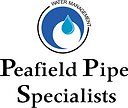In the intricate network of modern infrastructure, pipelines play a pivotal role in transporting vital resources such as water, oil, and gas. The integrity of these pipelines is paramount, as any failure can lead to catastrophic consequences for both the environment and human lives. This is where hydrostatic pressure testing comes into play – a crucial method that evaluates the robustness of pipelines and ensures their safety. In this article, we delve into the depths of hydrostatic pressure testing, understanding its significance, process, benefits, and the future it holds.
Understanding Hydrostatic Pressure Testing
Hydrostatic pressure testing involves subjecting pipelines to elevated pressures using a liquid medium, usually water, to assess their structural integrity. The primary objectives of this process include identifying leaks, verifying welds and joints, and confirming the pipeline’s ability to withstand the pressures it will face during operation. It is a critical component of the pipeline construction and maintenance lifecycle, providing a comprehensive examination of the pipeline’s fitness for service.
Preparing for Hydrostatic Pressure Testing
Before the testing procedure begins, meticulous preparation is essential. Pipeline segments that need to be tested are carefully selected, taking into consideration factors such as pipeline material, location, and accessibility. Gathering the necessary equipment and materials, including pressure gauges, pumps, and safety gear, ensures a smooth testing process. Additionally, ensuring the cleanliness of the pipeline and effective dewatering helps in achieving accurate testing results. Safety measures for personnel and the environment must be meticulously outlined to prevent accidents and minimize environmental impact.
Steps Involved in Hydrostatic Pressure Testing
Filling the Pipeline with Test Fluid: The pipeline is filled with the chosen test fluid, which is often water, but can also include foam or other suitable alternatives. Compatibility between the test fluid and pipeline materials is crucial to prevent adverse reactions that could compromise the integrity of the pipeline.
Pressurization of the Pipeline: The pipeline is pressurized gradually, and the pressure is increased to a level that exceeds the maximum operating pressure of the pipeline. Calculations based on the pipeline’s design factors guide the determination of the test pressure. Pressure gauges and data acquisition systems are employed to monitor and record the pressure levels accurately.
Holding and Monitoring the Pressure: Once the desired pressure is achieved, the pipeline is held at that pressure for a specified duration. This holding period allows for observation of pressure fluctuations that could indicate potential leaks or weaknesses in the pipeline structure. Any significant pressure drop during this phase calls for further investigation.
Releasing Pressure and Draining the Test Fluid: After the holding period, the pressure is gradually released, and the test fluid is drained from the pipeline. Proper disposal or recycling of the test fluid is imperative, addressing environmental concerns associated with the testing process.
Interpretation of Hydrostatic Pressure Test Results
Analyzing the pressure data and observations collected during the testing phase is a crucial step. Acceptance criteria for pressure fluctuations are established to determine whether the pipeline passes the test. Any deviations from the expected pressure behavior warrant further investigation. Detected leaks or anomalies are addressed promptly, and the appropriate corrective actions are taken to restore the pipeline’s integrity.
Benefits and Limitations
Hydrostatic pressure testing offers several advantages. It can detect defects, weak points, and even minor imperfections that might compromise the pipeline’s functionality. Additionally, the testing process validates the pipeline’s design integrity and adherence to safety standards. However, the method has its limitations, such as its inability to detect certain types of defects, like those occurring within the pipeline’s wall. Moreover, the environmental impact of the test fluids used, particularly water, raises concerns that need to be addressed in future testing methodologies.
Advances in Hydrostatic Pressure Testing Techniques
Advancements in technology are revolutionizing hydrostatic pressure testing. Automated processes streamline testing procedures, reducing the potential for human error. Integration of technology enables real-time data analysis, enhancing the accuracy of results interpretation. Remote monitoring and control further improve safety measures for personnel, allowing for safer testing in challenging environments.
Regulatory Standards and Industry Guidelines
To maintain uniformity and quality across the industry, various regulatory bodies such as the American Petroleum Institute (API) and the American Society of Mechanical Engineers (ASME) establish guidelines for hydrostatic pressure testing. Compliance with these standards ensures that pipelines meet the required safety criteria and operate effectively.
Case Studies: Successful Hydrostatic Pressure Testing
Real-world case studies highlight the critical role of hydrostatic pressure testing. In one instance, a newly constructed gas pipeline was subjected to hydrostatic pressure testing, revealing a minor welding defect that could have led to a major leak. Swift repairs were made, preventing potential disaster. Such cases underscore the significance of meticulous testing procedures.
Future Trends in Pipeline Testing
The future of hydrostatic pressure testing holds promise. Evolving technologies are enhancing testing accuracy, allowing for even more precise detection of defects. Environmental considerations are leading to the exploration of alternative test fluids that minimize the impact on ecosystems. Integration of testing with predictive maintenance systems is on the horizon, enabling proactive identification and resolution of potential issues before they escalate.
Conclusion
Hydrostatic pressure testing stands as a sentinel guarding the safety and integrity of pipelines. Its meticulous procedures and accurate analysis provide a vital layer of assurance in an ever-evolving world of infrastructure. By continuously advancing testing techniques, refining standards, and embracing innovative technology, the industry is poised to ensure that pipelines remain a reliable conduit for resources, safeguarding both the environment and human lives. As we move forward, let us remember that the thoroughness of hydrostatic pressure testing is not just about testing pipelines; it’s about ensuring the strength of the connections that bind our world together.
